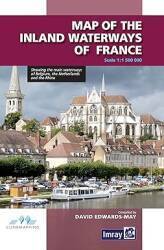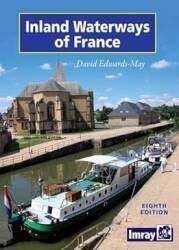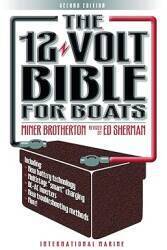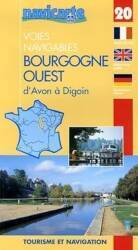
Beaulieu-sur-Loire to St-Thibault
Continuing south on the Canal Latéral à la Loire from Beaulieu-sur-Loire
We're on a week-long canal boat trip along
the Canal Latéral à la Loire
in central France.
We started in Briare,
crossing the large Canal Bridge over the Loire
and traveling south for a day past
Châtillon-sur-Loire and spending the
night tied up at Beaulieu-sur-Loire.
Today we will pass through our first
écluse or lock just south
of Beaulieu-sur-Loire.
Then we will pass Maimbray, Belleville,
Sury-près-Léré,
Léré, Boulleret, and Bannay.
We will tie up for the night at
Saint-Thibault-sur-Loire, in a municipal
boat basin in a short side canal branch.
Saint-Thibault-sur-Loire is between Saint-Satur
and the Loire, and the hilltop
town of Sancerre overlooks both.
Saint-Satur and Sancerre are labeled on this map,
Saint-Thibault-sur-Loire isn't.
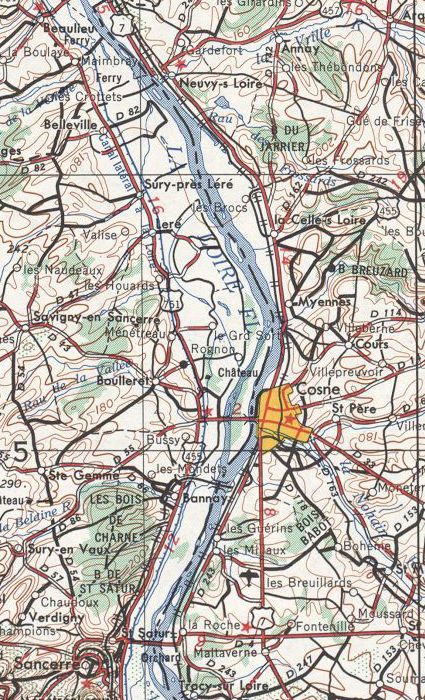
Part of map NL-31-2 from the Perry-Castañeda Library Map Collection at the University of Texas at Austin.
Maimbray
Maimbray is a small village just over two kilometers along the canal south of Beaulieu-sur-Loire. This is where we will encounter our first écluse or lock.
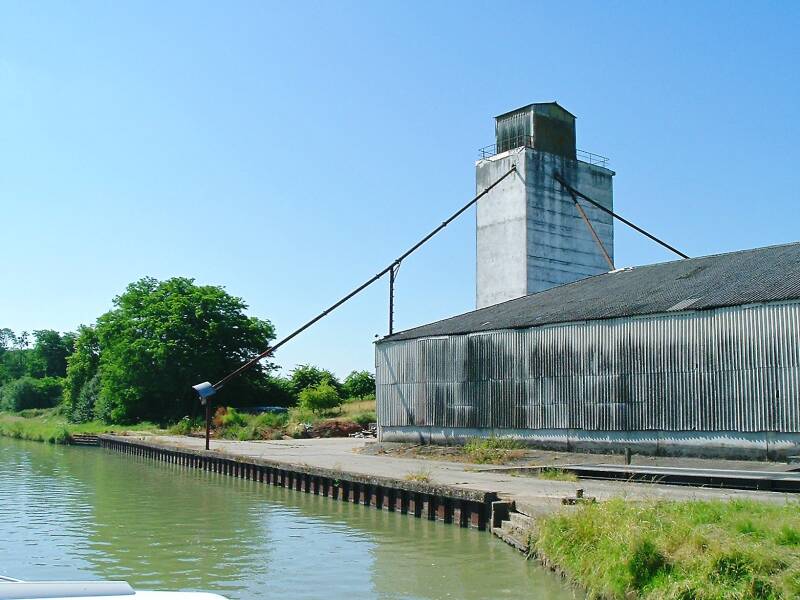
First, though, we will pass a grain storage facility used to load grain onto commercial boats. Most vessels on the canal are pleasure boats, but there is still commercial freight barge traffic.
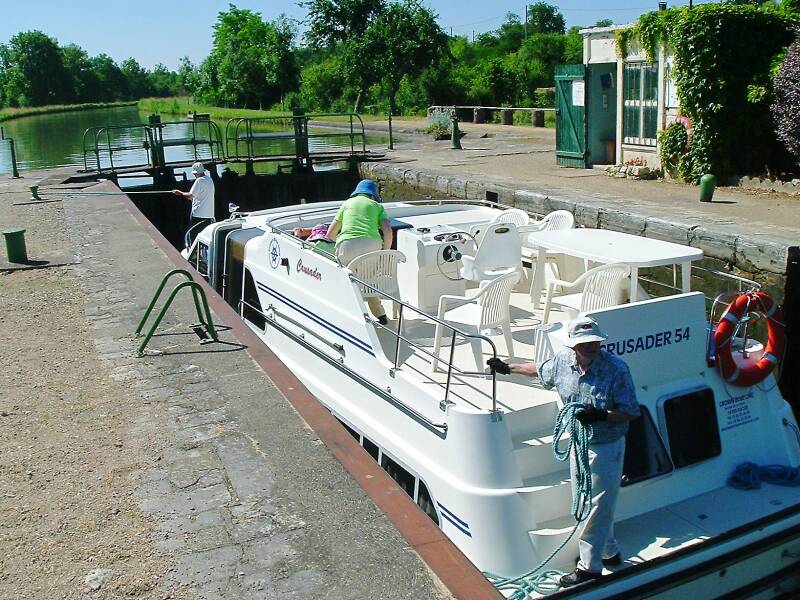
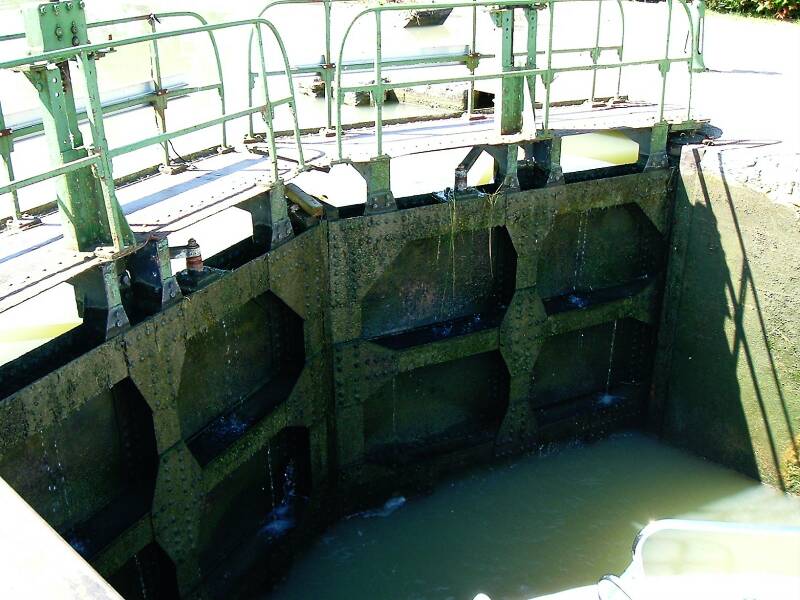
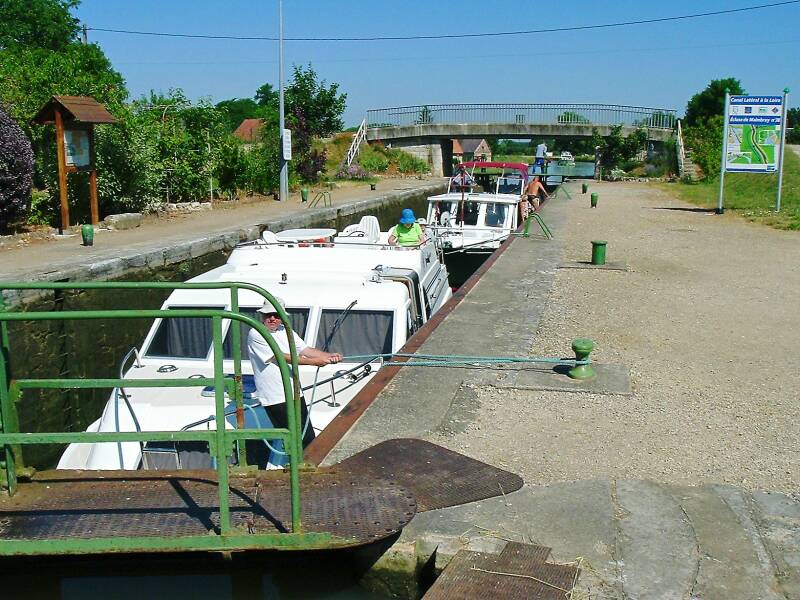

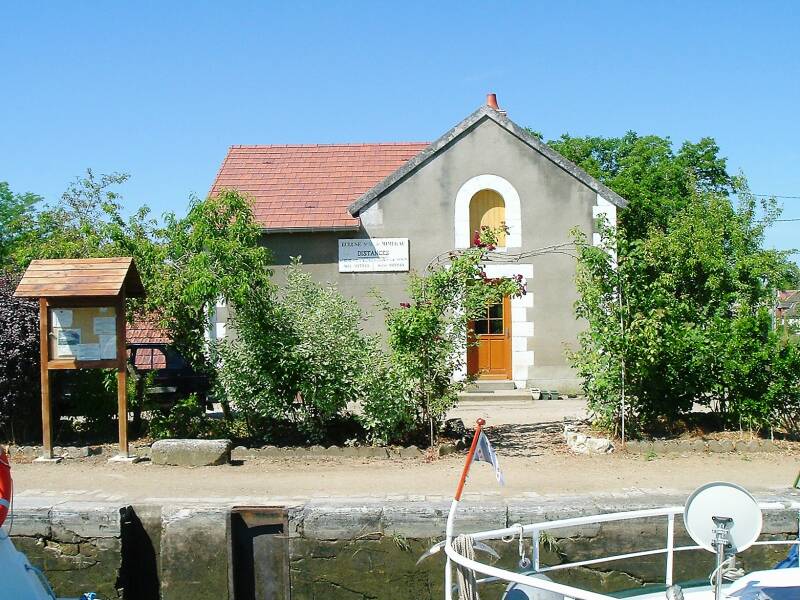
Belleville-sur-Loire
[1] For those readers in one of the three countries not yet using the metric system (USA, Myanmar, and Liberia), that's 0.072930408 square leagues.
Belleville-sur-Loire is a small town with 1,037 inhabitants in the 2013 census. The Belleville Nuclear Power Plant is the main employer for the town. The plant site covers over 170 hectares. [1]
The plant has two 1300 megawatt pressurized water reactors. It was built between 1979 and 1988, and the two reactors went on line in 1987 and 1988. It generated 17.8 billion kWh in 2014, meaning that it ran at 64% capacity for the year.
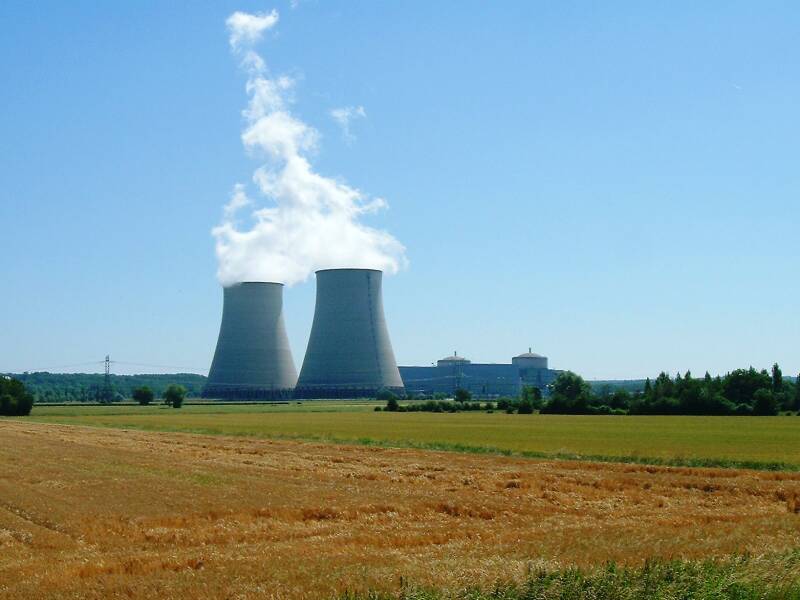
Belleville-sur-Loire
The plant is operated by Électricité de France, the leading supplier of electricity in the world. In 2008, EDF acquired British Energy and now produces 20% of the electricity in Britain. It produces 22% of the European Union's electricity. EDF also generates electricity in several western European countries, Brazil, Chile, the U.S., Turkey, Cameroon, China, and elsewhere including French overseas territory in French Guiana, Guadeloupe, Martinique, Saint-Barthélemy, Saint-Martin, St-Pierre-et-Miquelon, Polynesia, New Caledonia, and Réunion. Nuclear energy generates about 80% of EDF's electricity in France. Their world-wide 134.5 GW global electrical power generation in mid 2015 came from a variety of sources, over 70% of it from nuclear power.
| Worldwide | EU | Source | |
| 72.9 GW | 54% | 84.7% | Nuclear |
| 21.6 GW | 16% | 4.6% | Hydroelectric |
| 12.9 GW | 10% | 2.7% | Natural gas |
| 10.5 GW | 8% | 2.7% | Coal |
| 9.9 GW | 7% | 1.2% | Oil |
| 6.7 GW | 5% | 3.7% | Wind, solar, biomass |
EDF's nuclear power in France comes from 58 operating reactors in 19 power plants: 34 900 MW reactors, 20 1300 MW reactors, and 4 1450 MW reactors.
Despite all this, I have encountered Americans who watch a constant stream of Fox "News" and believe that France does not have electricity outside Paris and maybe one or two other large cities!
This plant was built near Belleville-sur-Loire for three reasons. First, it's not too far from Paris, a major consumer of electrical power. Second, the Loire provides cooling water. Third, high-voltage power lines already ran from here to the Massif Central. EDF operates a mesh network with 100,000 kilometers of lines operating at 63 kV to 400 kV. Distribution is at lower voltages — 15, 20, or 30 kV — with 1.2 million kilometers of lines in the medium and low voltage distribution network.
We continued south on the canal, rising little by little in locks like this one at Peseau.


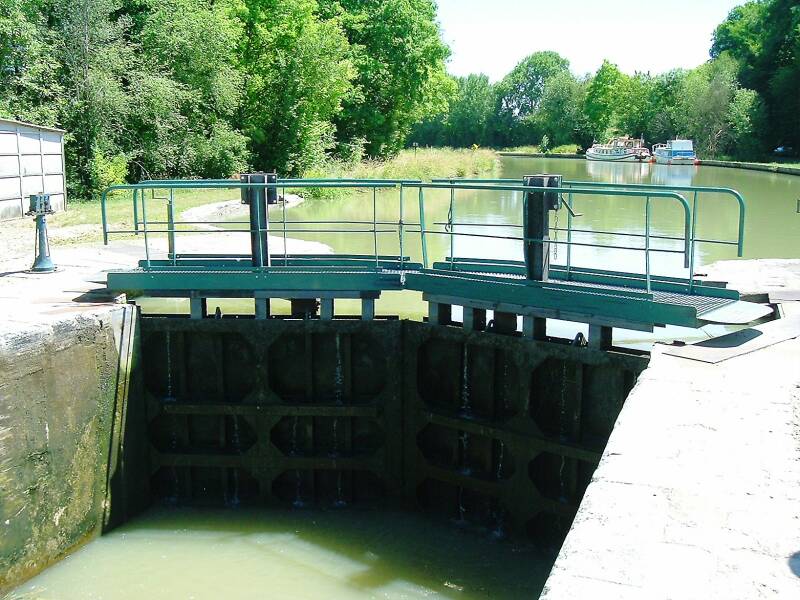
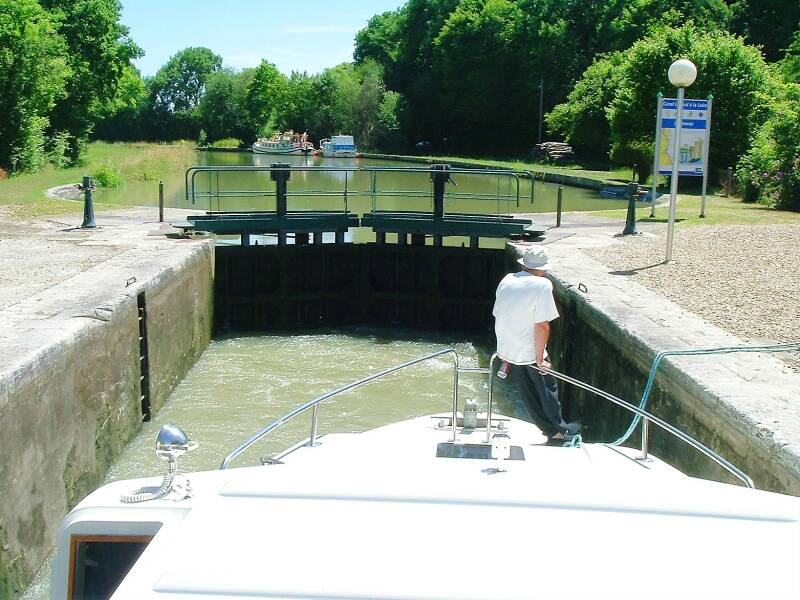
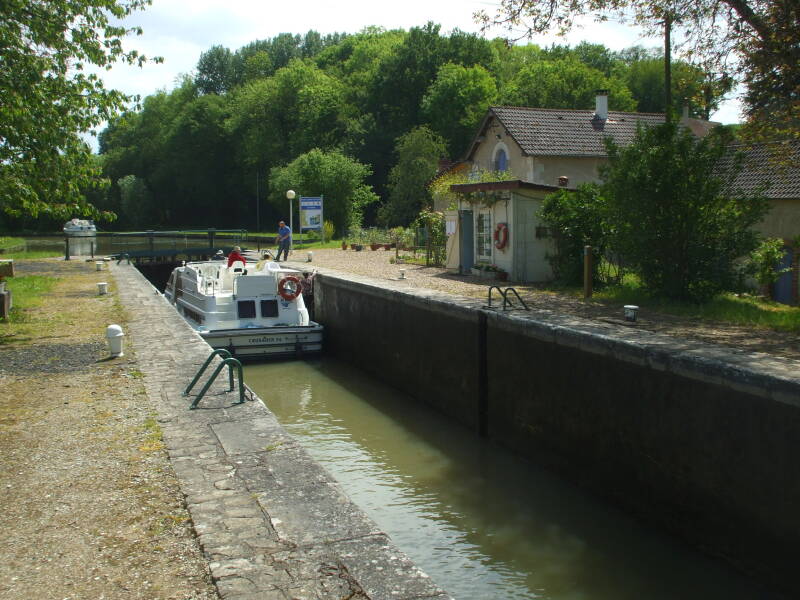
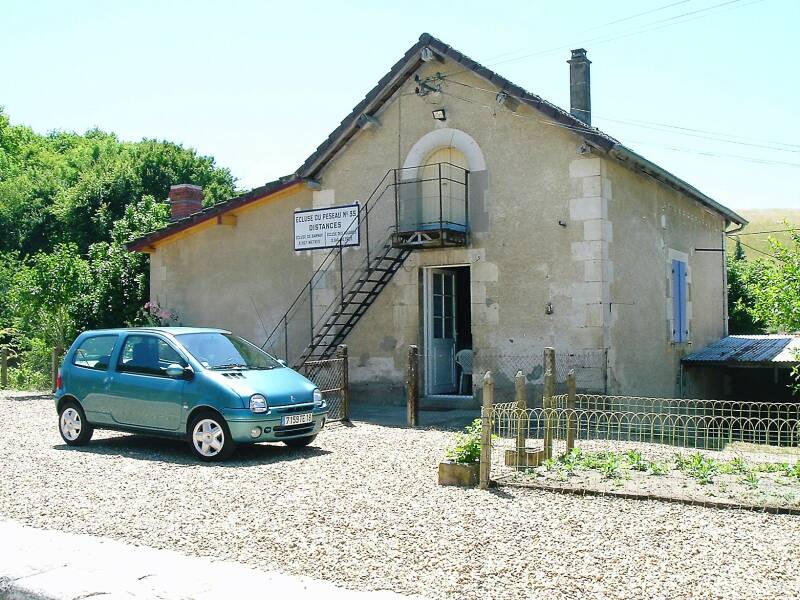
Sury-près-Léré
More onSury-près-Léré
Sury-près-Léré is a village of about 590 people. The area is agricultural and has been for centuries, its name goes back to the Roman occupation of the area. "Sury" comes from the Latin personal name Surius.
The settlement is mentioned in some written documents in 1208, 1230, and 1380, variously as Seriacum, Seri, and Sury Suriaco. The Church of John the Baptist in the village dates to the late 15th or early 16th century.
Léré
More onLéré
Léré is also an agricultural town. Between Sury-près-Léré and Léré we passed more agricultural businesses along the canal, and a commercial barge.
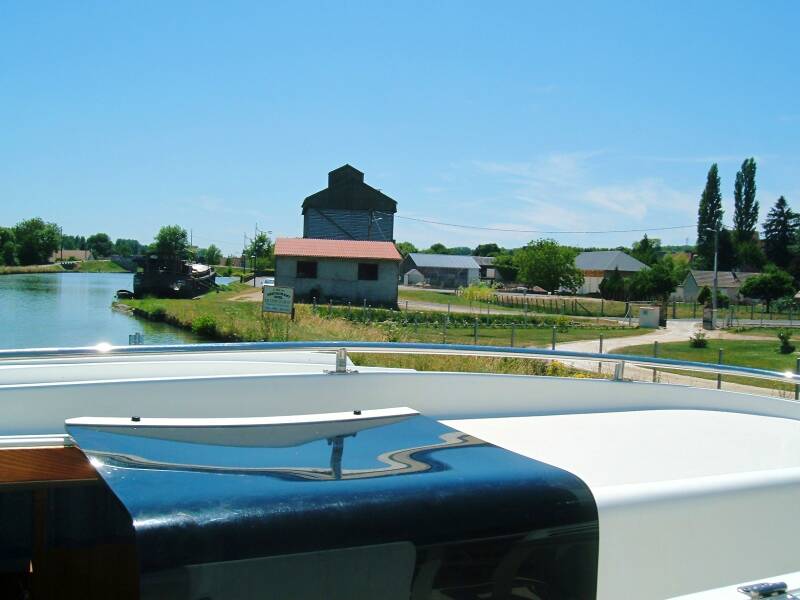
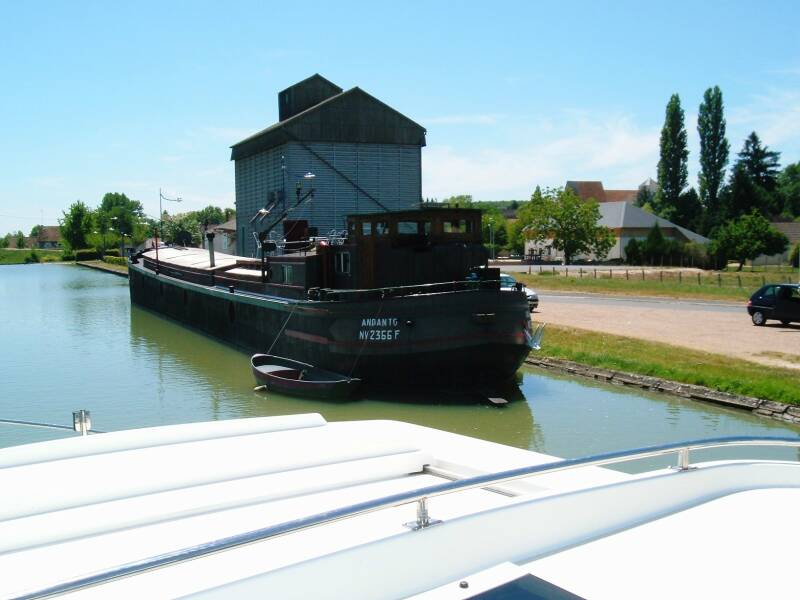
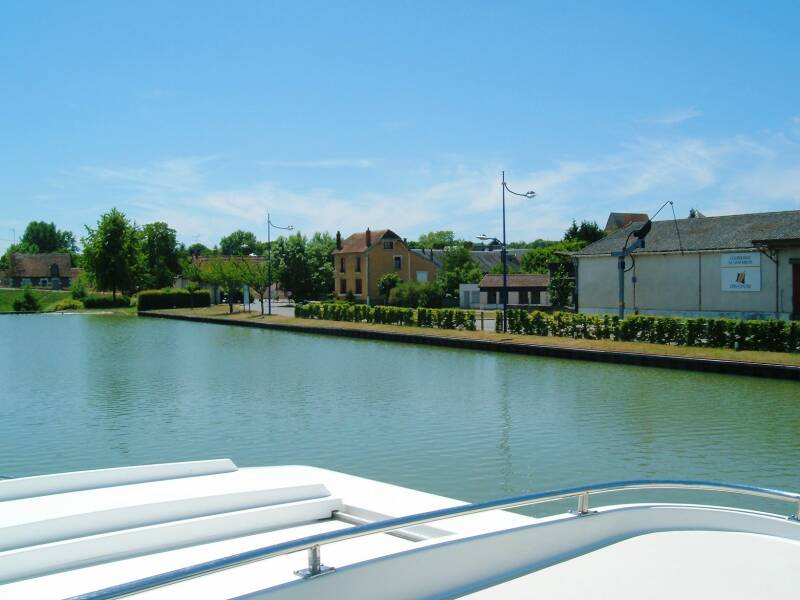
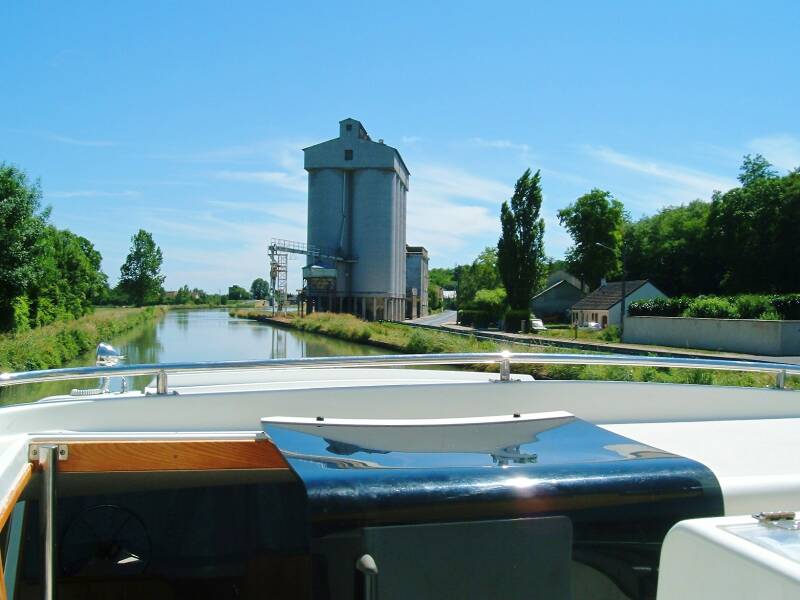
Léré dates back to Roman times, when its settled area was down on the bank of the Loire. When the Normans began penetrating into central France, the monks stored their relics in the sanctuary of the collegiate Church of Saint Martin, close to where the canal was built in the early 1820s.
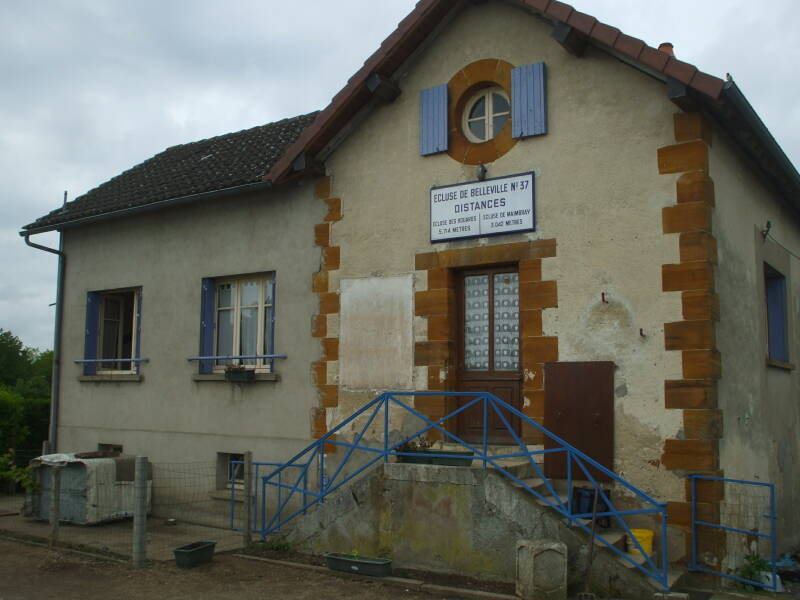
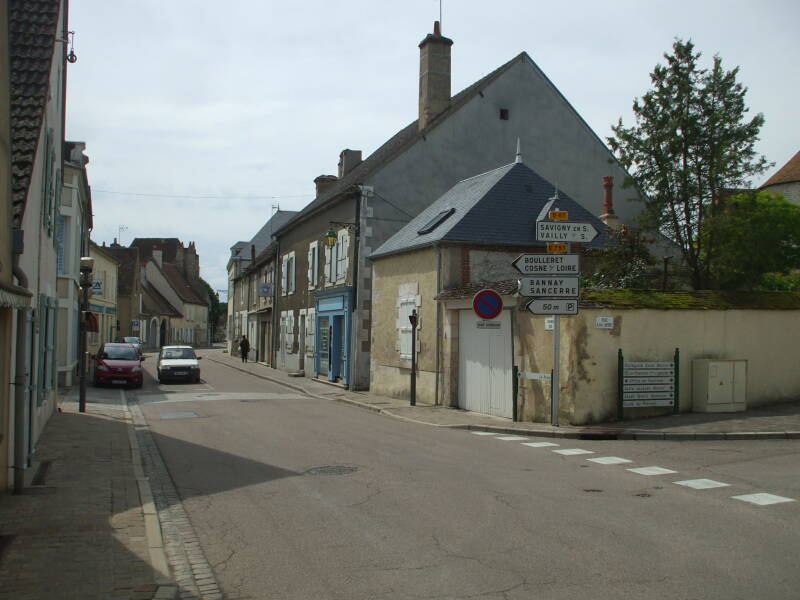
We passed through a lock, tied up, and walked into town. The town had been fortified under King Philippe Auguste in the early 1200s. It now has a population of around 1,140, about twice that of Sury-près-Léré. The main sight is the Collegiate Church of Saint Martin.
Saint Martin of Tours or Sanctus Martinus Turonensis as he would have been known to Latin speakers in the Middle Ages, was born in in either 316 or 336 in what today is Szombathely, Hungary. He served in the Roman army in Gaul, today's France. He became the Bishop of Tours in 371, serving until his death in 397.
Martin began attending a Christian church at the age of 10. His father was a tribune or senior officer in the Roman army, and the family moved around. Martin grew up in Ticinum, today's Pavia, Italy. His father's position required Martin to join a cavalry unit at the age of 15. At 18 he was stationed at Samarobriva in Gaul, today Amiens, France. Christianity was now officially tolerated, but Mithraism was far more common in the Roman army.
Just before a battle in today's Germany, Martin concluded that his Christian faith prohibited him from military action. He said "I am a soldier of Christ. I cannot fight." He was taken into custody for cowardice, and in response he volunteered to go unarmed in the front lines. His commanding officers planned to take him up on that offer, but the opposing force sued for peace and the battle did not happen. Martin was released from military service. There was no room for conscientious objectors in the Roman army.
Martin went to Caesarodunum, today's Tours, France, where he became involved in arguments in favor of Trinitarianism and against Arianism. Martin's mentor was forced into exile, and Martin returned to Italy. According to the hagiographies, along the way he converted an entire Roman Alpine brigade to Christianity and then confronted Satan himself. It was a rough road. Once he got home he converted his mother and several others, but his father stuck with his Roman military faith of Mithraism.
Martin got involved in some anti-Arian zealotry and was scourged and exiled for his trouble. He then lived for a while as a hermit on Gallinaria, now Isola d'Albenga in the Ligurian Sea along the northwest coast of the Italian peninsula.
Martin's mentor, Hilary of Poitier, a prominent proponent of Trinitarianism, returned to Tours in 361. Martin joined him and established a hermitage that developed into the oldest monastery known in Europe.
Martin was elevated to Bishop of Tours in 371. He established more monastic communities and extended the boundaries of his episcopate.

The hagiographies describe his enthusiastic destruction of various pagan temples and altars in an area with quite of bit of Druidic folk religion still in place. However, some of the stories are obviously copies of almost identical stories from classical times. Martin was said to have discovered vine-pruning by observing a goat eating vegetation. But that was a re-telling of the Greek myth of Aristaeus, the god of wine-making, bee-keeping, animal husbandry, cheese-making, and other useful agricultural pursuits.
The most popular story about Martin is set during his time in the Roman army. He was approaching the gates of Samarobriva (now Amiens) on a cold night and encountered a scantily dressed beggar. Martin cut his military cloak in half and gave half to the beggar. That night Martin had a dream-vision of Jesus wearing the half-cloak that Martin had given him (Christ in the guise of the beggar) and saying to the angels, "Martin, who is still but a catechumen, clothed me with this robe." [2]
[2] How would anyone know this? Martin must have told people about his dream. Otherwise it's like Citizen Kane and the investigation of the dying words of a man who died alone.
The half that Martin kept was preserved at the Marmoutier Abbey near Tours as the famous relic of the Merovingian Kings of the Franks. Or maybe the relic was the newly whole cloak, as in one version of the story Martin discovered the next morning that his cloak had been restored to completeness. Martin's miraculous cloak, the cappa Sancti Martini, first appears in the royal treasury inventory in 679. It was carried into battle by the king and used as a holy relic on which oaths were sworn.
The priest who cared for the miraculous cloak or cappa in its reliquary was called the cappelanu. With the relic carried into battle, this led to all all priests serving the military being called cappelani. That Latin term led to the French word chapelains, and from there to the English chaplain.
A very small temporary church would be built to house the relic when it was out on these military missions. Such a temporary structure was called capella for "little cloak." That led to a small church being called a chapel.
Martin was enormously popular in the Middle Ages. A basilica was built over his tomb in Tours in the 460s. From the late 4th century soon after his death into the Middle Ages, much of western Europe and Britain began a 40 days fast on the day after Saint Martin's Day, the 11th of November. This later was called Advent and considered as a time of spiritual preparation for Christmas.
A threat appeared after the 9th century. The Normans settled along the northern coast of France in what came to be called "Normandy." They began raiding further and further inland, and the grand basilica in Tours was an obvious target.
The relics of Saint Martin were moved to Léré in the 11th century and stored in a crypt. The Normans sacked the chapel above, but the relics were safe in the hidden crypt. A century later, the Collegiate Church of Saint Martin was built over the crypt.
A collegiate church is one where the daily office of worship is carried out by a college of canons. That is, non-monastic clergy organised as a self-governing body. It is similar to a cathedral but is not the seat of a bishop. In early medieval England these were called minsters. The modern description is "a church with more than one minister," served by "the priesthood of all believers" and locally governed by its congregation.
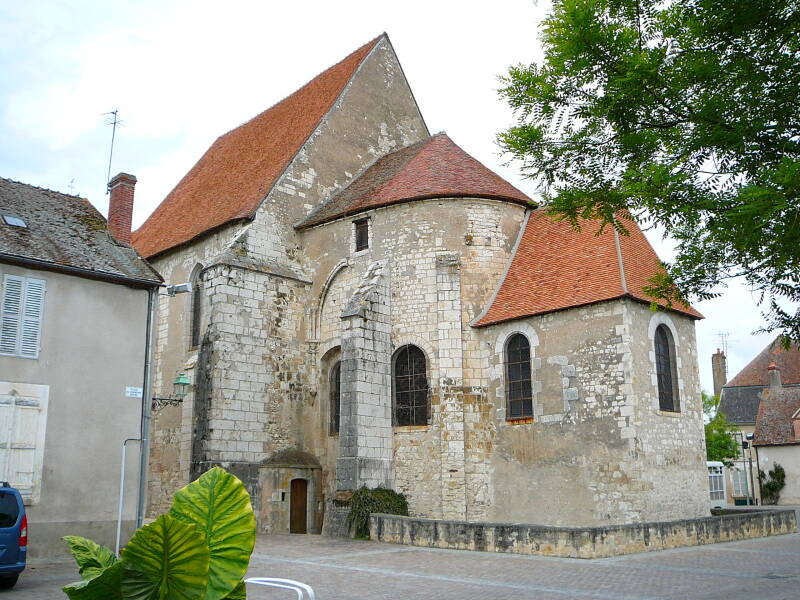
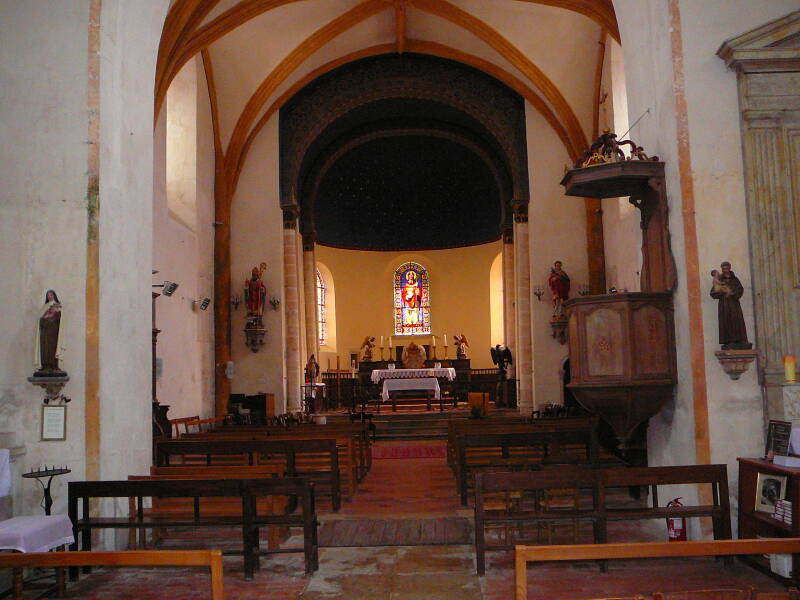
Boulleret
More onBoulleret
Boulleret is a small town of 1,360 inhabitants at the 2013 census. Its Church of La Madeleine was built in the 14th centuries with additions and renovations in the 15th and late 19th centuries.
Chateau Buranlue is outside of town on the road to Sainte-Gemme. It was started in the late 15th or early 16th century, and then extended in 1550 and again in the 18th century. It has been used as a set for several films and television series.
Bannay
More onBannay
Bannay was mentioned in 887 in the records of the canons of the Basilica of Saint Martin of Tours. The occasion was that the basilica had traded villa Marsat for Bannay in a deal with the brothers of the Saint-Julien basilica in Brioude. Bannay was then mentioned again in 903, 919, and 987 as one of the possessions of Saint Martin.
Its population was 855 at the census in 2013. It has varied between 600 and 1,000 since 1820 except for climbing briefly to 1,332 in 1891. This population peak was probably associated with the wine production peak before the phylloxera infestation wiped out French vineyards.
Saint-Thibault-sur-Loire
More onSaint-Thibault-sur-Loire
It's a very pleasant afternoon's motoring up the canal between rich farm fields and forests. We pass other pleasure boats and a few commercial barges.
Saint-Thibault-sur-Loire is the Loire river port adjacent to Saint-Satur, below the hilltop town of Sancerre. The Bituriges tribe of the Celts settled here. After the Romans defeated them at what the Romans called Avaricum, now Bourges, this settlement became part of Roman Aquitania. The Romans established a river town here and called it Gordana.
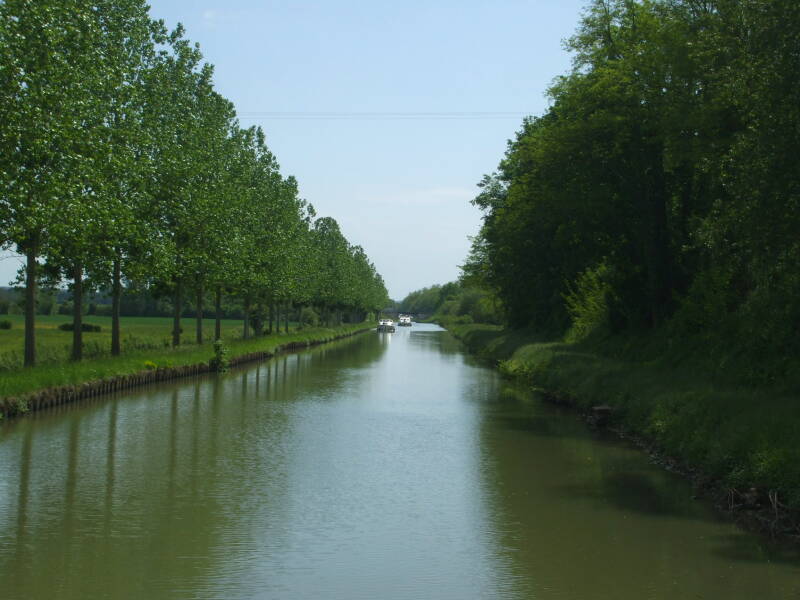
The river port was very busy shipping the Sancerre wines before the Canal Latéral à la Loire was built in 1827–1838.
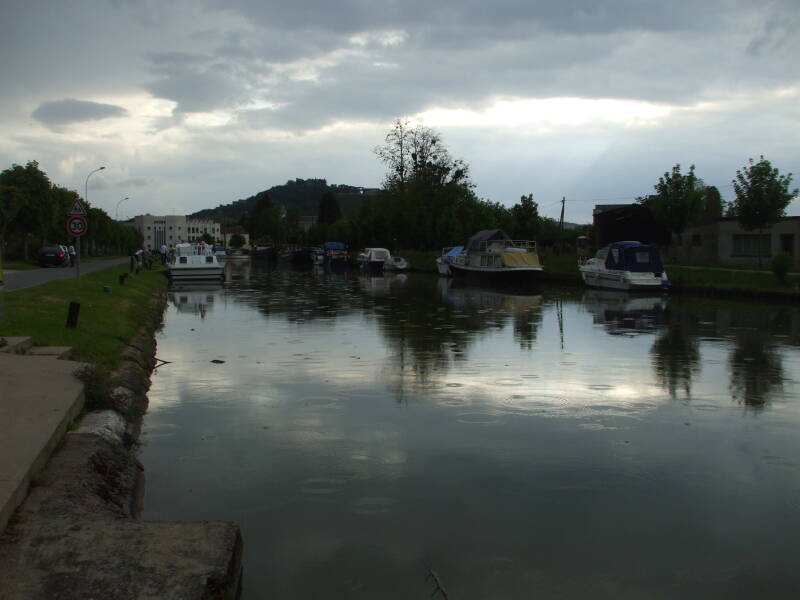
A side channel branches off the canal here, you can tie up for the night in the town's boat basin for a few Euros. Water is available, as it is at all towns. Electricity is available here for a few Euros more. However, the lights, fans, and radio on our boat run off the secondary 12V DC system that is charged by the engine. The primary 12V DC battery is dedicated to starting the engine, the secondary is for lights and accessories.
A very tall lock leads down from the branch canal to the river, but it hasn't been used for many years. Some boat maintenance businesses are based here.
Nearby is the 12th century Saint Thibault Chapel or the Chapel of the Mariners.
Saint-Satur
More onSaint-Satur
You cross the canal and start uphill into Saint-Satur. It's larger, with about 1,500 inhabitants. The area was settled before the Romans arrived. The main sight is the Abbey of Saint-Satur. Parts of some of its surrounding structures date back before the Hundred Years' War to the 13th century, when the abbey was flourishing.
A roaming evangelizer now known as Saint Romble founded a convent in the 5th century here in the area controlled by Castle Gordona. In the middle of the 7th century Gordona came to be called Saint-Satur. Saturus (or Satyrus), along with Felicitas, Perpetua, and others, had been martyred in Carthage in 203. Pope Paschal I had obtained what were thought to be relics of Saturus and the others. In 846 the Archbishop of Bourges sent those of Saturus to the growing abbey.
Wars during the next two centuries led to the abbey buildings being plundered and damaged. In 1034 Matilda, daughter of Cimon, the lord of Castle Gordona, undertook the project of restoring the abbey and re-establishing a religious community. She got the support of the lord of Sancerre and the archbishop of Bourges, and established a Chapter of Canons. This is a college of clerics who recite the canonical hours and live in a non-cloistered community.
In 1104 a new Romanesque church was consecrated here by the Archbishop of Bourges. This drew the attention of the Pope, who evicted the secular canons and replaced them with Augustinian monks.
The Hundred Years' War was actually a series of wars over an even longer period, from 1337 to 1453. For five generations of kings, the English House of Plantagenet fought the French House of Valois for control of France. English forces seized Saint-Satur in 1361 and destroyed the abbey and the church.
The monks began rebuilding the abbey in 1367, and got as far as finishing the choir of the church. They didn't have the funds, material, or manpower to continue construction beyond that. Then the English army came through again in 1420, plundered the abbey, and drowned 42 monks in the river.
The abbey stood in ruins until 1454, when there was partial reconstruction of what had been a partially built church. The community limped along until 1567, when the Protestants of Sancerre destroyed and burned the abbey.
The church was reconstructed in 1617–1626. But in 1757 the Bishop suppressed the abbey and redirected its funds to the episcopate. In 1775 the religious community was finally abolished and its church became a parish church, and it remains today as the parish church of Saint-Satur.
We will spend the night in the port of Saint-Thibault and continue our trip in the morning.




